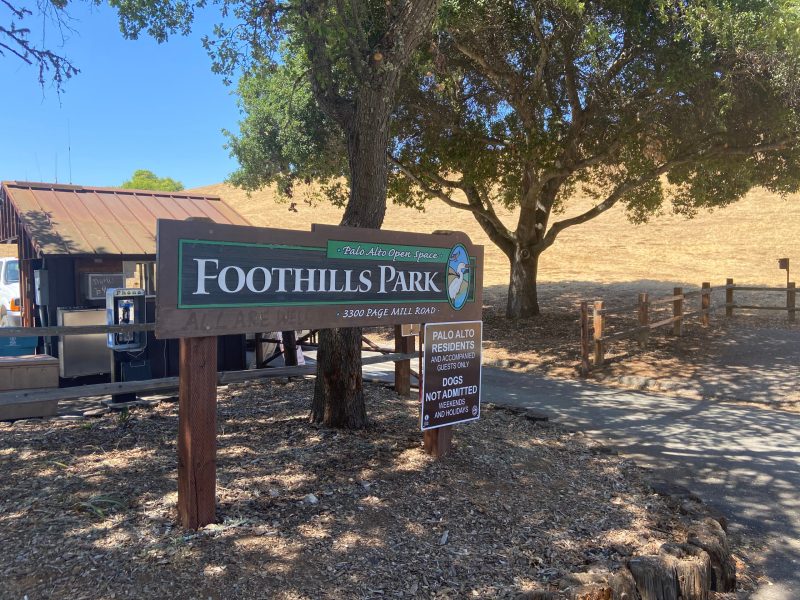Tucked in the hills of the Santa Cruz Mountains lies Foothills Park, 1,400 acres of land scattered with hiking trails, camping grounds and grassy lawns surrounding Boronda Lake. Flocks of turkey and herds of deer occasionally cross the park’s trails. People with disabilities frequent the smaller paths and campsites, as vehicles can park in multiple locations inside the park.
But under Palo Alto’s current municipal code, it is a misdemeanor for anyone who isn’t a resident of the city to enter the park, if not accompanied by a resident.
Recent protests calling for local reform — coupled with delays to the implementation of the Palo Alto Parks and Recreation commission’s new pilot program to open Foothills Park — reignited a debate over the origins of the policy and whether they enforce racist and elitist policies of the past.
In the late 1950s, the area now known as Foothills Park was originally under the ownership of Palo Alto resident Russel Lee, founder of Palo Alto Medical Foundation, and his wife Dorothy. To preserve the land, the Lees decided to donate parts of the acreage and sell the rest to the City for $1,000 per acre, totaling $1.3 million.
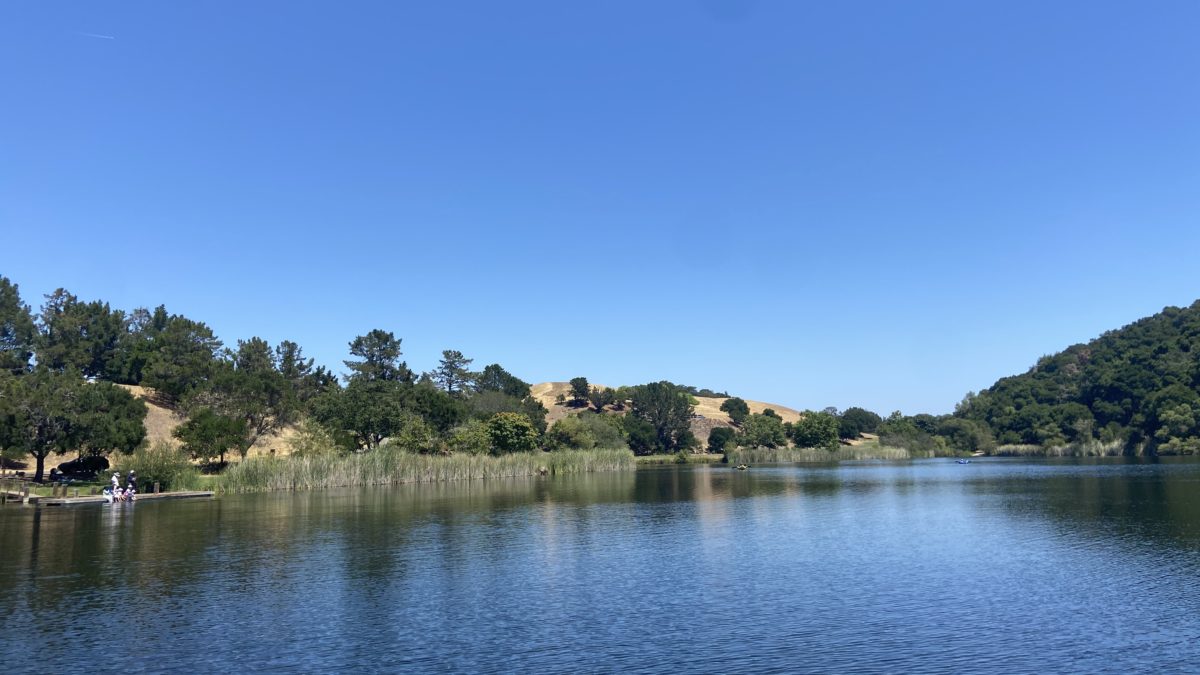
By the early 1960s, the City of Palo Alto had acquired most of the land and looked to neighboring cities to help with the costs of development and maintenance.
“They [Palo Alto] went out and tried to get buy-ins from other communities to help finance the development,” said Palo Alto historian Steve Staiger. “The city already owned the land, but they wanted to develop it, and they mainly went after the county of Santa Clara.”
According to Geoff Paulsen, a member of the Lee family and a former Foothills Park ranger, Palo Alto also approached Los Altos Hills and Portola Valley for financial support — two cities which were newly incorporated only years prior.
“Los Altos, Los Altos Hills were brand new towns that had been incorporated just in the 1950s. They wouldn’t have had the resources to participate,” Staiger said. “Portola Valley, which was another brand-new town, was in a different county, so they wouldn’t be likely to participate.”
Los Altos and Portola Valley declined to participate financially, and as a result, Palo Alto decided to adopt the exclusionary policy in 1965, officially making it a misdemeanor to enter the park as a non-resident — which includes Stanford students and employees that live on-campus.
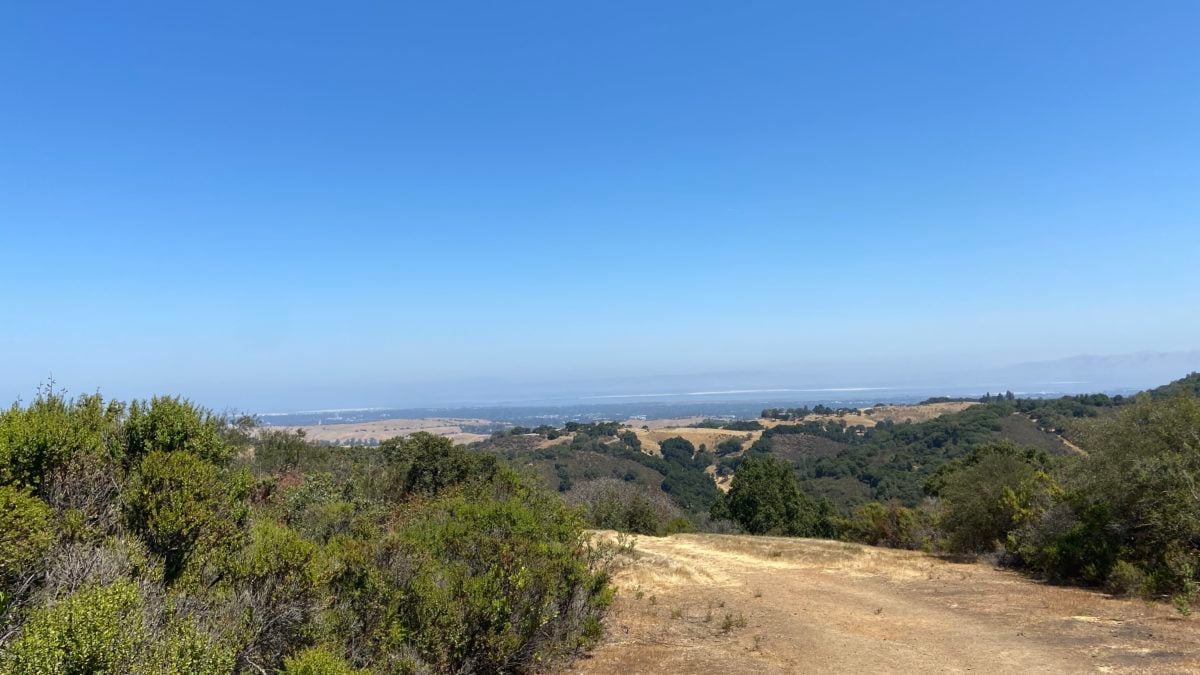
According to Parks and Recreation Liaison Daren Anderson, no one has been issued a misdemeanor in the last 20 years. But over the last five years, the park has turned away an average of 3,100 non-resident vehicles, while official visitation by residents has been on the decline since the 1970s. The entrance is staffed only on weekends and holidays, however, leaving the park effectively open to anyone during the week.
The ordinance has faced pushback several times since its inception: once in the 1970s, again in the 1990s and most recently in 2005. Each time, the ordinance remained — Foothills park continued to turn away non-residents.
But with the recent rise in protests following the killing of George Floyd, local and state governments across the nation are starting to face public pressure to reform and revise past policies.
Community discontent
On June 6, protesters gathered at Palo Alto City Hall to demand change to local policing and other remnants of racist policies.
At the protest, East Palo Alto Mayor Regina Wallace-Jones and Reverend Kaloma A. Smith both called for inclusivity through policy reform — and in their speeches said that changing Foothills Park’s residents-only ordinance was the first step.
Local political and religious leaders, civil rights organizations and members of the Lee family called upon Palo Alto City Council to repeal the residents-only policy.
“This policy sends a terrible message to our neighboring communities — particularly those which do not enjoy the same socioeconomic advantages that Palo Alto does — and leaves a bad taste in the mouths of thousands of would-be visitors who are prohibited by uniformed City staff from entering a public park,” the letter states.
The letter also called on the City Council to direct the Parks and Recreations Commission to create a new policy that would better reflect the City’s commitment to “equality, openness and resource protection” in a letter sent on June 7.
But the Parks and Recreation Commission already had a pilot program ready to go.
In Nov. 2019, the Parks and Recreation Commission unanimously approved a new pilot program that would introduce a $6 entrance permit for non-residents. The program would allow non-residents to purchase daily permits through an online reservation system. Up to 50 permits could be purchased daily to prevent an excess of visitors.
The program was scheduled to be discussed by the City Council in early spring. But with the shelter-in-place order enacted in March, the City Council pushed the topic until June 22. Once the June 22 meeting arrived, Council member Lydia Kou and Vice Mayor Tom Dubois proposed tabling the topic once more until after the summer recess. The proposal passed 5-2, with Fine and Council member Alison Cormack in dissent.
Following the last City Council Meeting, Parks and Recreation Commissioner Ryan McCauley resigned from the commission.
“From the numerous conversations that I had with several Council members before the June vote to yank it from the agenda, it’s clear to me that most members of the City Council are working very hard to avoid what they (incorrectly) view as a politically toxic issue,” McCauley wrote in a statement to The Daily. “I wish that they would prove me wrong, but thus far, the Council majority has lacked the political courage to even discuss the issue.”
Former Council member LaDoris Cordell experienced this same reluctance from her colleagues in her time as Council member from 2004 to 2008. According to Cordell, members of the Council delayed voting on such a contentious topic out of fear of losing voters in the upcoming elections.
“The Parks and Recreation Commission’s proposed plan is unnecessary, but I understand that in light of the political cowardice of some of the City Council members, this was a way to slowly get them on board,” Cordell wrote in a statement to The Daily.
On June 22, Cordell, who also worked as a Santa Clara Superior Court judge, threatened the city with a lawsuit on the basis that the ordinance is unconstitutional. Cordell cited the ruling of a Connecticut Supreme Court case, which found a residents-only policy on public parks and open spaces was unconstitutional, on grounds that a park functions as a public forum where first amendment rights are essential and cannot be infringed. If a non-resident attempted to enter the park to exercise their right to assembly or protest, Cordell argued, they would be turned away and denied their constitutional rights. The city has yet to publicly respond to Cordell.
“The City appreciates Judge Cordell’s engagement on this issue, as well as that of the many other residents and visitors who have offered their thoughts and opinions,” wrote City Attorney Molly Stump wrote in a statement to The Daily.
A racist legacy?
Los Altos resident Anjali Ramanathan decided to take action after the City Council tabled the topic of Foothills Park until after summer break.
“It seemed abundantly clear that not only was it not an issue that anybody really cared enough to discuss, but rather it was something that could actively be pushed to the bottom of the agenda over and over again,” Ramanathan said.
Working under a full moon to ensure they had the most light possible, Ramanathan and other activists painted the word “desegregate” in front of the entrance to Foothills Park, only to find it power-washed away the next morning.
“That is when I was like, all right, we need to get as many people here as possible, because it’s not just clear that this is not an issue that the city is interested in, considering or thinking about or talking about — but also it’s something that there’s political will to crush,” Ramanathan said.
Ramanathan organized to re-paint the word, followed by a July 11 protest at the park’s entrance. According to Ramanathan, about 60 people arrived at the park entrance. Protestors covered park signs with writing and cardboard.
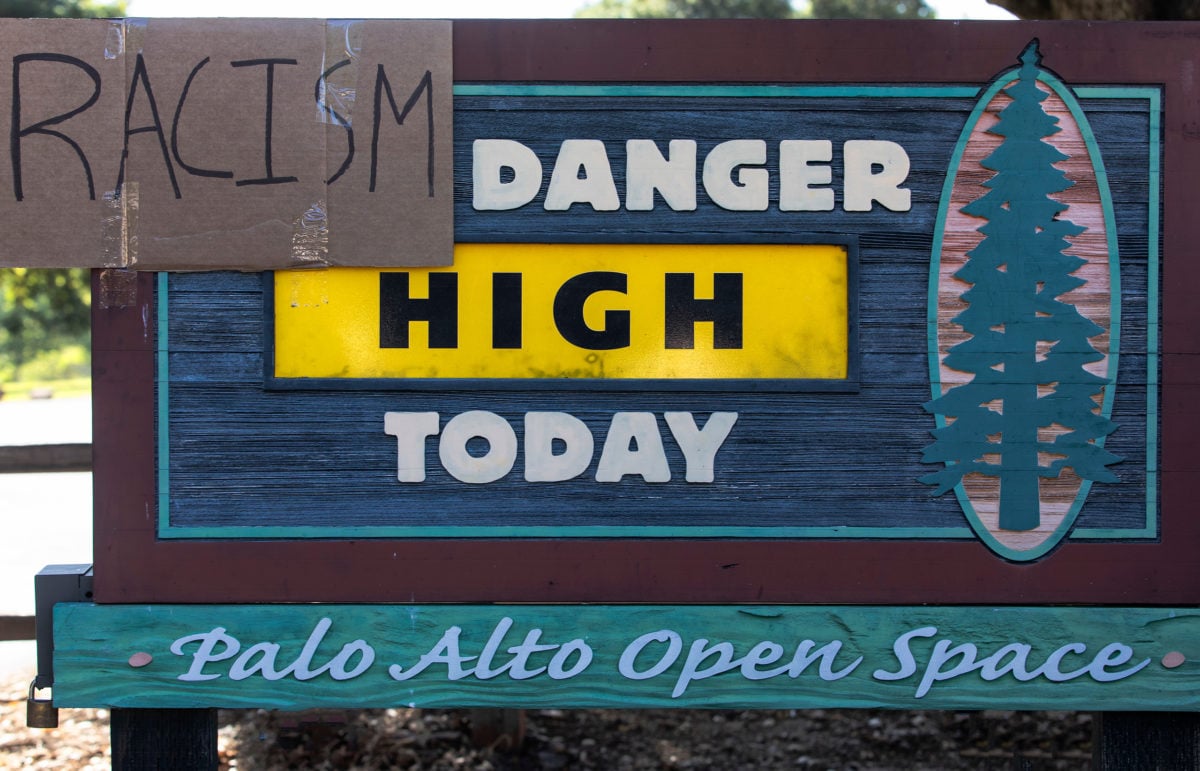
The protest received some backlash online, where supporters of the residents-only policy argued that the exclusivity is not as racially charged as Ramanathan had made it out to be.
“We’ve been getting tons of emails at City Council saying, ‘This isn’t a racist policy. It’s just a private park — leave it alone,’” Palo Alto Mayor Adrian Fine said in an interview with The Daily.
Along with the protest, Ramanathan wrote a document compiled with short summaries and links to other articles or organizations, which she linked in Instagram posts advertising the protest. In the document, Ramanathan provided information on Palo Alto’s history of housing discrimination and redlining.
Ramanathan cites articles discussing racist realtor tactics that affected the racial demographics of Palo Alto following the Great Depression. Realtors would purposefully not sell properties in Palo Alto to people of color to keep them in certain neighborhoods, usually outside the city. Practices like these resulted in differing demographics across neighboring cities: East Palo Alto’s population is 15.6% Black and 7.2% white, while Palo Alto is 1.6% Black and 55.2% white, according to the U.S. Census Bureau.
Staiger doesn’t see a relation between racist realtor practices and the residents-only policy of Foothills Park. He notes that residents of East Palo Alto have access to Palo Alto’s 34 other parks.
“The previous practices in real estate in Palo Alto, in the Peninsula and in California as a whole has almost nothing to do with the restrictive access to Foothills Park. The limitations and restrictions have nothing to do with race or religion — it’s purely residents,” Staiger said. “Yes, the residents of East Palo Alto can’t go there, but they do have parklands out on the Baylands that they have access to. Palo Alto has 35 parks, this [Foothills] is the only one that has restrictions.”
Ramanathan, however, sees the ordinance as an extension of past housing discrimination, one that pushed Black and Hispanic communities out of Palo Alto.
“If those original housing policies were crafted with the intent to keep people of color out — anytime we’re enforcing a residents-only policy for that city, then we’re just enforcing those same policies of the past,” Ramanathan said.
Visitors’ impact
While some residents cite the city’s racist housing policies as reason to repeal the ordinance, other Palo Alto residents worry about the environmental damage that would follow an increase in visitation.
“The park can’t withstand the abuse that hordes of people would [cause] — whether they’re driving up there in their beat-up, old, 10-year-old car or they’re driving up there in their Maserati,” Staiger said. “If you have too many people … the quality of the park degrades.”
In response to public concerns over the pilot program’s feasibility, the Parks and Recreation Commission held a special meeting on July 28, inviting a panel of various field experts to discuss methods to mitigate environmental impacts.
The panel discussed the environmental impact of a visitor increase, benefits for student volunteers and Foothills staff well-being and workload. The issue of financing came up often in light of recent budget cuts that compromised other recreation programs around the city.
But some panelists also highlighted the benefits of opening a park. Alex Von Feldt, Executive Director of Grassroots Ecology, claims that volunteers often are discouraged by the residents-only policy. Nicole M. Ardoin, professor at the Graduate School of Education and director of the Emmett Interdisciplinary Program in Environment and Resources (E-IPER), also mentioned the mental health benefits of having such a large open space be accessible to the community and the ability to maintain social distancing measures due to the park’s size.
One of the major issues with fully opening the park would be the strain on staff. According to former Foothills Park Supervising Ranger Lester Hendrie, about one-third of Palo Alto is open-space preserve — including areas such as Arastradero and the Baylands — but the City employs only ten staff to manage the parks. Foothills Park lacks a supervising ranger and employs only six rangers to manage the 1,400-acre park.
“That’s a huge amount of trails and resources for a small staff to maintain, and any significant changes to the operation of Foothills Park do have an impact on staff, so staff well-being is the first concern,” Hendrie said.
Where the policy stands now
Returning from the summer session, City Council met on Aug. 3 to discuss the Parks and Recreation Commission’s pilot program. Cormack and Fine supported amending the municipal code in order to allow non-residents access to the park under the Parks and Recreation Commission’s pilot program.
“This is an opportunity to be more inclusive, and it just happens to be coming at a time that some people are concerned about, but this is a plan and a program that the Commission spent an entire year working on,” Cormack said. “We turn away thousands of people every year, and the body of evidence shows that there is room for them in the park.”
Cormack and Fine, though, were outvoted by the other members of the Council, which decided to revisit the issue in 2022 for a possible referendum, and to change the fine for violating the policy from a misdemeanor to an infraction. The pilot program will operate for a year to measure the costs of opening the park and the impact of increased visitation.
Kou, who proposed putting the item to vote, focused on the need to honor the park’s history and to leave it up to public opinion. Kou referred to a survey she had conducted where she found that, of 1,100 Palo Alto residents, 81% wished to keep the residents-only ordinance.
“What’s informing me [based on the survey] is that it should remain for residents only,” Kou said. “But I think as Council members, I don’t have the right to vote on the original motion — it should be by the voters.”
Council member Eric Filseth supported the motion to place the ordinance on the 2022 ballot, and pushed against some public comments that called on the City Council to remove the policy.
“A number of the speakers said, ‘It’s time to go beyond symbolism and take some concrete actions here,’ but this [opening Foothills Park to non-residents] actually seems to me about as symbolic as it’s possible to get,” Filseth said.
Ultimately, the pilot program will allow the City to measure the effects of new visitors and a possible increase in visitation. The question of whether the ordinance should be repealed will be up to Palo Alto residents’ votes in 2022.
In November, Palo Alto residents will vote for four seats in City Council, including the mayor’s. Tanaka and Kou are running for reelection, while Fine will not be running for another mayoral term.
“I’m always amazed at Palo Alto’s ability to miss an opportunity.” Fine said. “I think the pilot was a very small step to begin addressing that and to honor what the environment can do for folks of different backgrounds and also to be a good neighbor. That’s a lesson Palo Alto raised me with, and I wish we could do that for open spaces as well.”
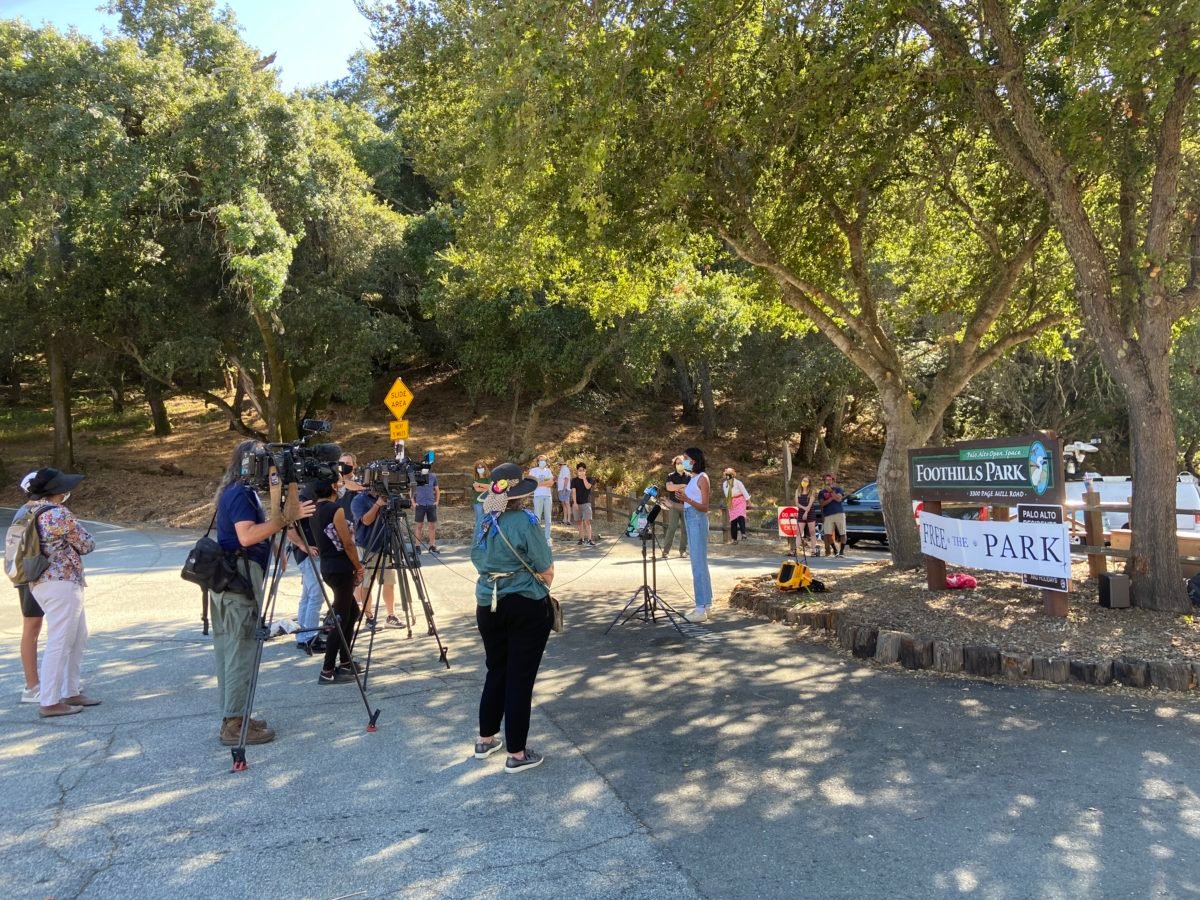
On Aug. 12, activists met at Foothills Park entrance once again to protest the decision.
According to Ramanathan, the City Council’s decision to move the item to the 2022 ballot is problematic because it delays the issue and sets the ultimate decision on voters.
“It is political posturing to say that it’s going to go to the ballot in 2022, and it’s done nothing but essentially be damaging to the issue,” Ramanathan said.
Fine also spoke at the protest, condemning the City Council for its decision and the postponement of opening the park to non-residents.
“You do not put civil rights to a vote,” Fine said. “There is a right and wrong, and the right thing is to open up this park.”
This article was updated to clarify that non-residents can enter the park if accompanied by a resident.
Contact Laura Malagrino at laura.malagrino ‘at’ gmail.com.
